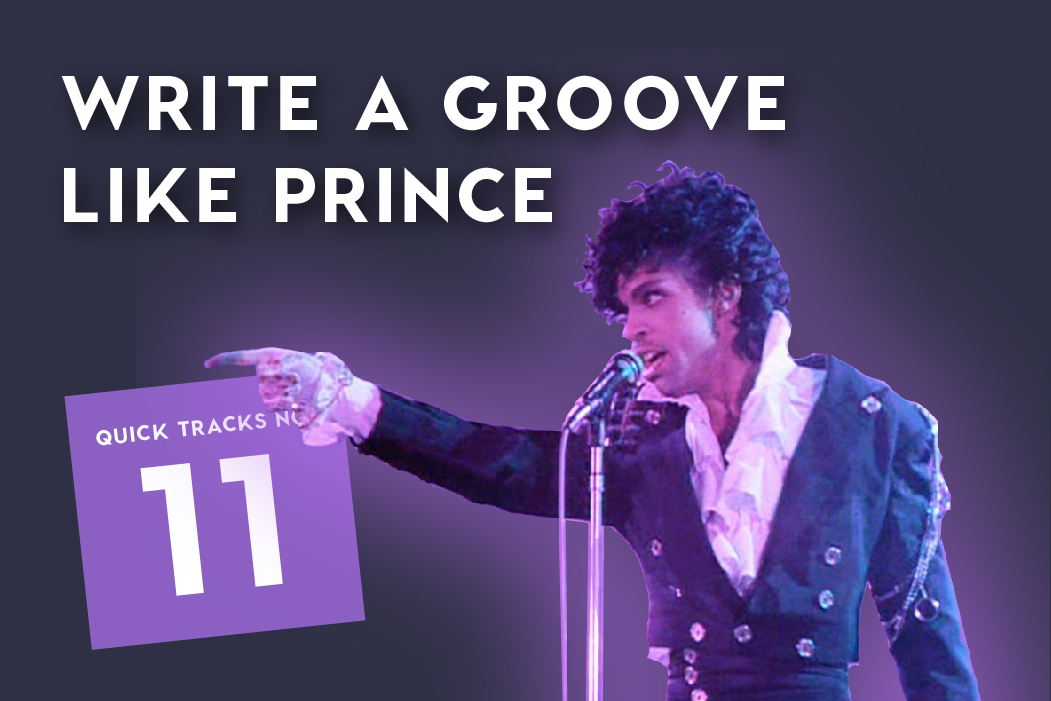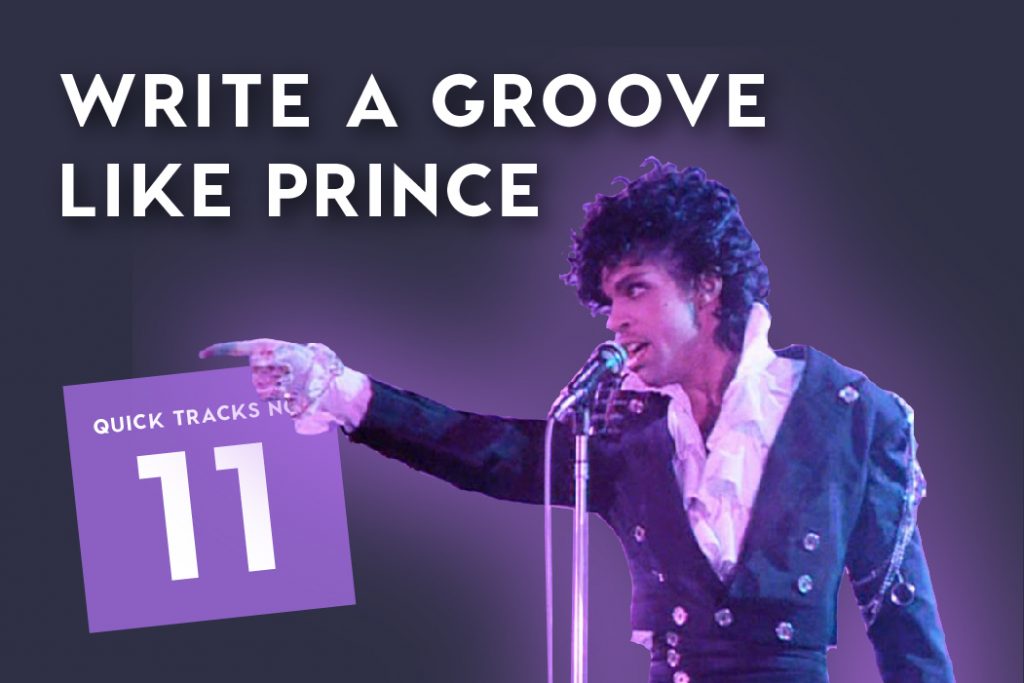
Welcome back to the dance floor, Quick Trackers! Once a month, we hook you up with a short production or songwriting challenge, aimed at helping to up your musicianship. To respond to the challenge, just email us, leave a comment, or post to social media with the hashtag #quicktracks and tag us @learntosoundfly.
For this month’s challenge, let’s embrace the genius of composer, producer, songwriter, and performer gone all too soon, Prince.
We could spend literally all week talking about how much we love Prince Rogers Nelson (1958-2016), and how he was bar none, the greatest artist in the business. But let’s keep it short for now. Prince had a troubled upbringing, much of which is the subject of his semi-autobiographical film, Purple Rain. Despite this adversity, or perhaps because of it, his phenomenal musical talent was quickly recognized in childhood, and he signed his first record deal at just 17 years old, going on to release decades of wildly innovative and chart-topping records.
Scroll down to explore Prince’s signature minimalist funk guitar sound, his chord voicings, and arranging style, all of which he pioneered and developed across several albums, and familiarize yourself with them. Because for our 11th Quick Tracks challenge, we want you to try writing a 60-second groove in the style of Prince. Think funky. Think light instrumentation, but also driving, unrelenting rhythmic centricity. The balance between those elements is key to attaining Prince-level swagger.
To brush up on writing well-syncopated drum and bass grooves in a funk style, definitely head over to our free course on the topic, Writing Funk Grooves for Drum and Bass taught by bandmates and bonafide funk lifers, Efa Etoroma Jr. and Carter Lee.
Let’s dive in to Prince’s minimal funk style
Okay, let’s start with the title track from his 1981 album, Controversy. The track is driven by a 4-on-the-floor kick drum beat, and a minimalistic, two-note voicing of the F#min7 chord (just the root and flat 7th is all you’ll need to get started here). Listen to the studio version of the song for clarity, but for entertainment, check out this insane live version for some serious schooling in funk rhythm guitar.
The voicing is sparse. He uses his right hand to steer the beat for the duration of the tune, and sprinkles in some amazing fills throughout that are easy to miss if you’re not listening carefully. Anything to keep the song from stagnating into funk repetition.
“Kiss,” from the soundtrack to his second film Under the Cherry Moon, also called Parade, is another popular song with minimal guitar work. In fact, the only guitar is heard on the last bar of the turnaround (the song loosely draws inspiration from a 24-bar blues form). There isn’t even bass on the track, just lead vocals, a gated synth sequence, and attitude. Talk about doing a lot with a little — one of his most well-known songs was created with only a handful of ingredients!
Take a listen to a few other classic Prince songs for inspiration. “D.M.S.R.” off his 1999 album, is a wickedly funky track with some nasty lines doubled on guitar and bass, and a simple but effective one-chord vamp using the classic James Brown 9 chord shape. The breakdown that starts just after the 6-minute mark is a great example of using rhythm and percussion as a compositional, structural tool. It’s a simple, but groovy move, and one that makes this highly repetitive track one of the standouts of his catalog.
Further examples? Prince’s minimal funky guitar rhythm comes through as mere accents to the drum beat in most of “Illusion, Coma, Pimp and Circumstance,” off his 2004 album, Musicology. Listen with headphones, so you can sense the way he uses the stereo guitars to add punctuation to the story. And “Head,” from Dirty Mind, is a Quincy Jones-esque romp that uses phased-out guitars plucked in a percussive, dry style to fuel the beat.
The important thing for this challenge is to embrace space, and use rhythm as a compositional tool, and the guitar as a motor.
Prince’s music obviously covered a lot of stylistic ground in his career, we’re only focusing on the one for today. His original brand of funk was largely informed by James Brown, George Clinton, Chic, and Sly Stone — spending time familiarizing yourself with their music will only help to solidify your understanding of Prince’s work. And these are really just scratching the surface here, if you want to dive deeper into Prince’s music and the origins of his style, check out Touré’s biography, I Would Die 4 U: Why Prince Became an Icon.
What might you come up with? Let us know! Share your work with us and have a funky good time with this one, and catch you on the dance floor!
Get 1:1 coaching on your songwriting from a seasoned pro.
Soundfly’s community of mentors can help you set the right goals, pave the right path toward success, and stick to schedules and routines that you develop together, so you improve every step of the way. Tell us what you’re working on, and we’ll find the right mentor for you!




